
BIOGERONTOLOGY
Scope & Guideline
Unraveling the Mysteries of Longevity and Health
Introduction
Aims and Scopes
- Cellular Senescence and Aging Mechanisms:
The journal delves into the cellular and molecular mechanisms underlying senescence, including the role of cellular stress, oxidative damage, and the impact of various biochemical pathways on aging. - Dietary Interventions and Aging:
Research on the effects of dietary restrictions, caloric restriction mimetics, and specific dietary components (such as polyphenols and antioxidants) on healthspan and lifespan is a prominent theme. - Therapeutic Approaches to Age-Related Disorders:
The journal includes studies on pharmacological interventions, such as senolytics and geroprotective agents, aimed at mitigating age-related diseases and improving longevity. - Microbiota and Aging:
Investigations into the gut microbiome's influence on aging processes and its potential therapeutic implications are increasingly featured. - Sex Differences in Aging:
The journal explores how biological sex impacts aging processes, health outcomes, and responses to interventions, highlighting the importance of sex-specific research. - Genetics and Aging:
Research on genetic factors that influence longevity, including the role of non-coding RNAs, telomere biology, and epigenetic modifications, is a key focus area. - Neurodegeneration and Aging:
The journal addresses the relationship between aging and neurodegenerative diseases, examining mechanisms and potential therapeutic strategies. - Environmental and Lifestyle Factors in Aging:
Studies assessing how environmental exposures, lifestyle choices, and stressors affect aging and longevity are also explored.
Trending and Emerging
- Advancements in Senolytics and Cellular Clearance:
The exploration of senolytic compounds that selectively eliminate senescent cells is a rapidly growing area, highlighting their potential to improve healthspan and combat age-related diseases. - Microbiome Research in Aging:
Research focusing on the gut microbiome's role in aging and its therapeutic potential is emerging as a significant theme, recognizing the microbiome's influence on health and longevity. - Integration of Omics Technologies:
The use of multi-omics approaches (genomics, proteomics, metabolomics) to study aging mechanisms is on the rise, providing comprehensive insights into the biological underpinnings of aging. - Focus on Healthspan Over Lifespan:
There is a notable shift towards emphasizing healthspan, or the period of life spent in good health, as opposed to merely extending lifespan, reflecting a holistic approach to aging. - Exploration of Environmental Factors:
Research examining the impacts of environmental factors, including radiation and pollutants, on aging and longevity is gaining attention, particularly in light of global health challenges. - Innovative Therapeutic Strategies:
Emerging therapies that target aging processes at the cellular level, such as gene editing and stem cell therapies, are being increasingly explored for their potential to rejuvenate tissues and improve health outcomes. - Personalized Medicine in Aging:
There is a growing interest in personalized approaches to aging interventions, utilizing genetic and epigenetic profiling to tailor therapies for individual aging processes.
Declining or Waning
- Traditional Models of Aging:
Research using traditional model organisms, such as rodents, is becoming less prevalent as the field moves towards more complex models (e.g., primate studies) that better reflect human aging. - Isolated Studies on Single Pathways:
There is a trend away from focusing solely on individual signaling pathways, with a shift towards more integrative approaches that consider the interconnectedness of various biological processes in aging. - Aging and Disease Correlation Without Mechanistic Insights:
Papers that simply correlate aging with diseases without delving into underlying mechanisms are becoming less common, as there is a growing demand for studies that provide mechanistic explanations. - Generalized Dietary Recommendations:
Research that offers broad dietary recommendations without specific biochemical or genetic insights is waning, as more precise and personalized dietary interventions gain traction.
Similar Journals
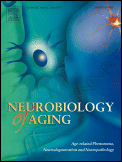
NEUROBIOLOGY OF AGING
Unraveling the Mysteries of Aging and the BrainNEUROBIOLOGY OF AGING, published by Elsevier Science Inc, is a premier journal dedicated to advancing our understanding of the complex interactions between the aging process and neurobiological mechanisms. With an ISSN of 0197-4580 and E-ISSN 1558-1497, the journal has established itself as a critical resource in the fields of Aging, Developmental Biology, Geriatrics and Gerontology, Clinical Neurology, and Neuroscience. Boasting a Q1 ranking in multiple categories, the journal is positioned within the top echelons of scholarly publication, underscoring its significant impact with an impressive Scopus ranking in various subfields. Committed to disseminating high-quality, peer-reviewed research, NEUROBIOLOGY OF AGING welcomes original articles, reviews, and research notes aiming to uncover the underlying processes of aging on the nervous system, fostering collaboration among researchers, professionals, and students alike. Although primarily subscription-based, the journal continues to play a vital role in shaping the discourse on aging and neurobiology, making it an essential publication for those engaged in this dynamic field.

CELL
Leading the charge in innovative biochemistry research.CELL is a premier academic journal in the field of Biochemistry, Genetics, and Molecular Biology, published by CELL PRESS. Founded in 1974, this esteemed journal has steadfastly contributed to advancing our understanding of cellular processes and organisms, making it integral for researchers and practitioners alike. With an impressive impact factor that places it in the Q1 category of its field, CELL ranks #1 out of 221 in general biochemistry and genetics, achieving a remarkable 99th percentile in Scopus rankings. Though it is not currently an open-access publication, the journal regularly disseminates high-quality research that impacts the scientific community significantly. Researchers, students, and professionals seeking to stay at the forefront of innovative discoveries and methodologies in molecular biology will find CELL an invaluable resource through its comprehensive articles and reviews.

REJUVENATION RESEARCH
Pioneering Research for a Healthier TomorrowRejuvenation Research is a premier journal dedicated to the advancing field of gerontology and aging research, published by Mary Ann Liebert, Inc. Established in 2000, the journal serves as a pivotal platform for the dissemination of scholarly articles that explore the complex mechanisms of aging and innovative approaches to rejuvenation. With an impact factor reflective of its robust scholarly contributions, the journal currently holds a Q4 ranking in Aging and a Q3 ranking in Geriatrics and Gerontology, showcasing its relevance in the academic community. This periodic publication, welcoming open access submissions, invites researchers, professionals, and students alike to engage with cutting-edge findings that could shape future geriatric practices and enhance quality of life. The journal underscores the importance of interdisciplinary collaboration, encouraging explorations that intersect with biochemistry, genetics, and other vital areas of study. Through its ongoing commitment to high-quality research, Rejuvenation Research remains a critical resource for understanding the biological underpinnings of aging and the strategies to mitigate its effects.

Lancet Healthy Longevity
Catalyzing Change in Aging and HealthThe Lancet Healthy Longevity is a premier journal published by Elsevier that focuses on advancing our understanding of healthy aging and longevity through interdisciplinary research. Established in 2020, this Open Access journal is committed to disseminating innovative findings that enhance public and individual health, making it accessible to a global audience. The journal is proud to be recognized with a Q1 ranking in critical categories such as Family Practice, Geriatrics and Gerontology, Health (Social Science), and Psychiatry and Mental Health, indicating its prominent role in shaping contemporary discourse in these domains. As one of the leading titles within the field, it holds an influential position in Scopus rankings, with top placements in Geriatrics and Gerontology as well as Family Practice, thereby reaching the 99th percentile of scholarly impact. The Lancet Healthy Longevity aims to foster collaboration among researchers, healthcare professionals, and policymakers to promote healthy longevity, ultimately supporting the growing aging population worldwide. With its commitment to high-quality research and global accessibility, this journal is a vital resource for those dedicated to improving health outcomes across the lifespan.
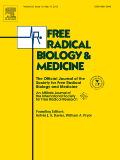
FREE RADICAL BIOLOGY AND MEDICINE
Advancing Knowledge in Biochemistry and Medical PhysiologyFREE RADICAL BIOLOGY AND MEDICINE, published by Elsevier Science Inc, is a premier journal dedicated to the field of biochemistry and medical physiology. With an ISSN of 0891-5849 and an E-ISSN of 1873-4596, this journal stands out with its impressive ranking in the 2023 category quartiles: Q1 in Biochemistry and Q1 in Physiology (medical). Specifically, it has achieved a remarkable position of 29th out of 438 in Biochemistry and 8th out of 113 in Physiology, placing it firmly in the 93rd percentile of its field, as per Scopus rankings. Since its inception in 1987, the journal has focused on advancing the understanding of free radicals and their role in biological processes, encompassing a wide range of topics from oxidative stress to therapeutic applications. Although it does not currently offer open access, the journal's rigorous peer-review process and impactful research ensure that it remains a valuable resource for researchers and professionals seeking to explore the intricate relationships between free radicals and health. The journal's headquarters are located at STE 800, 230 Park Ave, New York, NY 10169, reflecting its esteemed place within the scientific community and commitment to high-quality research.
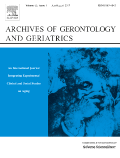
ARCHIVES OF GERONTOLOGY AND GERIATRICS
Shaping the future of geriatric practice through research.The Archives of Gerontology and Geriatrics, published by Elsevier Ireland Ltd, is a leading journal in the fields of Aging and Geriatrics and Gerontology. With an ISSN of 0167-4943 and an E-ISSN of 1872-6976, it has established itself as a crucial platform for disseminating high-quality research focused on the biological and psychosocial aspects of aging. The journal holds an impressive Q2 ranking in both Aging and Geriatrics and Gerontology, and a Q1 ranking in Gerontology and Health (Social Science) as of 2023, reflecting its significant impact in these disciplines. Additionally, the journal is ranked #33/371 in Social Sciences (Health) and #5/39 in Nursing (Gerontology) according to Scopus, showcasing its esteemed position in the academic community. Although currently not open access, the journal offers a wealth of research articles from 1982 to the upcoming 2025 that are vital for stakeholders including researchers, healthcare professionals, and students aiming to advance their understanding of aging processes and policies. Titles published within its pages contribute to shaping agendas in public health and gerontological practice, making it an essential resource for those involved in the study of the elderly population.
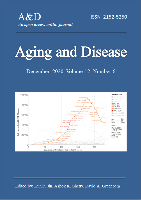
Aging and Disease
Fostering collaboration for a healthier aging population.Aging and Disease is a leading open-access journal published by the International Society on Aging and Disease, dedicated to advancing the understanding of aging and its associated diseases. Since its inception in 2010, the journal has established itself as a vital resource for researchers and practitioners in the fields of Geriatrics, Neurology, Cell Biology, and Pathology. With an impressive Q1 ranking across multiple categories and a robust position in Scopus rankings, including ranks in the top 3% in Geriatrics and Gerontology, it showcases high-quality research that addresses the complexities of aging processes. Each issue presents original articles, reviews, and insights aimed at improving health outcomes for the aging population. The open-access model ensures that valuable research findings are readily available to a global audience, fostering collaboration and innovation. As a go-to publication for scholars, healthcare professionals, and students, Aging and Disease significantly contributes to the multidisciplinary dialogue surrounding aging and its health implications.
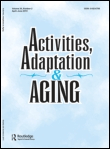
Activities Adaptation & Aging
Pioneering research for meaningful engagement in later life.Activities Adaptation & Aging is a leading journal dedicated to the intersection of aging research, health professions, and gerontology, published by Routledge Journals, Taylor & Francis Ltd. With its origins dating back to 1981, this journal has established itself as a vital resource for scholars and practitioners alike, focusing on innovative approaches to enhance the quality of life for older adults. The journal’s inclusion in various prestigious Scopus ranks—such as being positioned in the 92nd percentile for Health Professions (miscellaneous)—reflects its significant impact in the field. Operating without open access, it provides essential insights and empirical research that are crucial for advancing knowledge and practices related to adaptation and engagement in aging. With a strong reputation built over the decades, Activities Adaptation & Aging continues to be an essential platform for disseminating research findings, fostering scholarly dialogue, and promoting effective interventions for aging populations.

npj Aging and Mechanisms of Disease
Unraveling the Secrets of Aging and Diseasenpj Aging and Mechanisms of Disease is a leading open-access journal dedicated to advancing the understanding of the biological mechanisms underlying aging and age-related diseases. Published by NATURE PORTFOLIO in the United Kingdom, this journal has established itself as a vital resource within the fields of Aging and Geriatrics and Gerontology, proudly holding a prestigious Q1 ranking in both categories as of 2023. With an impressive Scopus ranking, placing it in the top 10 for Geriatrics and Gerontology, and the top 9 for Aging, the journal is committed to disseminating high-quality, peer-reviewed research that offers innovative insights and fosters collaboration among researchers and practitioners. Since its inception in 2015, npj Aging and Mechanisms of Disease has embraced the open-access model, ensuring that groundbreaking findings are freely available to all, thereby promoting widespread knowledge-sharing within the scientific community. This journal serves as an essential platform for those seeking to explore the complex interplay of genetic, molecular, and environmental factors that influence aging and its associated challenges.
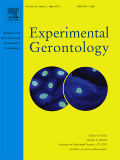
EXPERIMENTAL GERONTOLOGY
Bridging Disciplines to Innovate in GerontologyEXPERIMENTAL GERONTOLOGY is a prestigious journal published by PERGAMON-ELSEVIER SCIENCE LTD, dedicated to the evolving field of aging research. With a rich history dating back to 1964 and continuing through 2024, this journal aims to advance the understanding of the biological processes underlying aging and develop interdisciplinary approaches to improve healthspan. ENCOMPASSING a broad scope, including *biochemistry*, *cell biology*, *endocrinology*, *genetics*, and *molecular biology*, it holds impressive rankings in the 2023 Scopus Ranks, featuring in Q1 and Q2 quartiles across multiple categories. This positions it as a vital resource for researchers and professionals focused on gerontology and related fields. As a subscription-based journal without open access, EXPERIMENTAL GERONTOLOGY ensures the dissemination of high-quality research through rigorous peer review, making it an essential publication for those aspiring to remain at the forefront of aging studies.